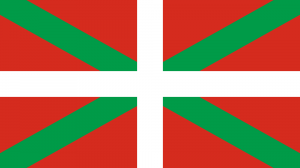Language/Basque/Grammar/Gender
Hi Basque learners! 😊
In this lesson, we will take a closer look at gender in the Basque language. The Basque language is unique because it does not distinguish between male and female genders in its nouns. Instead, it uses a system of natural gender, commonly referred to as "animate" and "inanimate." In this system, all nouns are either "animate" or "inanimate," according to their origin and whether they are living things or not.
Take a moment to explore these relevant pages as you conclude this lesson: Future Tense & How to Use Be.
Animate Nouns[edit | edit source]
Animate nouns refer to living beings, including humans, animals, and plants. They are considered as male or female according to their natural gender. However, this differentiation between natural genders in animate nouns is not outstanding. The difference is shown only in the article chosen to precede the noun.
Some examples of animate nouns in Basque:
| Basque | Pronunciation | English |
|---|---|---|
| Txakurra | tʃakuɾa | Dog |
| Lorea | loɾea | Flower |
| Amabai | amabaɪ | Mother-in-law |
| Antxoa | antʃoa | Anchovy |
As you can see, there is no distinction between male or female gender in the Basque language for these nouns.
To illustrate this point, let's create a dialogue to see these words in context:
- Person 1: Txakurra gustatzen zaio. (I like dogs)
- Person 2: Txakurra ere maite ditut! (I love dogs too!)
In this example, "Txakurra" refers to just "dog," without any specification of gender.
Inanimate Nouns[edit | edit source]
Inanimate nouns refer to non-living things such as objects, materials, and abstract concepts. They are considered as one gender, either masculine or feminine. Unfortunately, there's no clear rule for determining the gender of inanimate nouns in Basque, so they must be learned as you encounter them.
Some examples of inanimate nouns in Basque:
| Basque | Pronunciation | English |
|---|---|---|
| Gizona | giθona | Man |
| Eskua | eskua | Hand |
| Txalupa | tʃalupa | Boat |
| Garagardoa | ɡaɾaɡaɾdoa | Beer |
As you can see, these nouns are either masculine or feminine, according to their natural gender.
To illustrate this point, let's create a dialogue to see these words in context:
- Person 1: Eskua izan da. (It was the hand)
- Person 2: Esku zuzenagoa nuen. (I had the right hand)
In this example, "Eskua" refers to a "hand" but requires the right article to indicate the direction it's pointing. The correct article (zuzenagoa in this case) would depend on whether the hand being referred to is the right or left hand.
Agreement in Adjectives[edit | edit source]
When it comes to adjectives in Basque, they must agree with the nouns they modify in terms of number and gender. If the noun is inanimate and masculine, then the adjective also needs to be inanimate and masculine. If the noun is animate or feminine, then the adjective needs to be animate or feminine accordingly.
For example:
- Gizona altua da (The man is tall)
- Emakume polita (The pretty woman)
In "Gizona altua da," "altua" (tall) is masculine and inanimate because "gizona" (man) is also masculine and inanimate. In the second example, "polit" (pretty) is feminine and animate because "emakume" (woman) is also feminine and animate.
To help you remember, think about matching the "natural gender" of the noun.
Exercise[edit | edit source]
Match the following adjectives to their appropriate nouns:
1. Aspergarri a. Itxura 2. Handia b. Ahet 3. Goxoa c. Izar 4. Iluna d. Gizona
➡ If you have any questions, please ask them in the comments section below.
➡ Feel free to edit this wiki page if you think it can be improved. 😎
Sources[edit | edit source]
- Basque and gender: how a genderless language also suffers from ...
- Gender conflict resolution in Spanish–Basque mixed DPs ...

